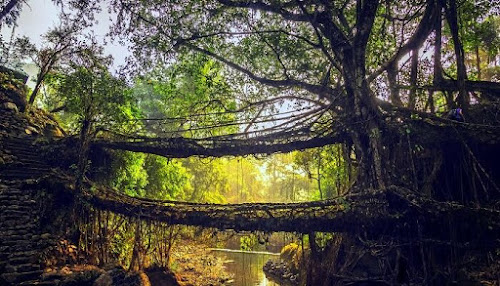EIA draft 2020: How it can harm Northeast- NE TRAVEL & TOURISM
Northeast India is always known for its
magical and spectacular natural beauty. What does northeast India does not
have, from high mountain peak to plateaus, from dense forest to low lying
grassland, and needless to say about the wide varieties of wildlife species? One more
thing that northeast India possesses is an abundant amount of natural
resources. But all this is now in grave danger because of a term
called Environment Impact assessment shortly EIA.
What is EIA?
Environmental Impact assessment is
the assessment of the environmental consequences of a plan, policy, program, or
actual projects before the decision to move forward with the proposed action.
Evolution of EIA
However, India came up with this
law only in the year 1994. It was started when the Planning commission directed
the Department of Science and Technology to examine the river-valley projects
from an environmental view.
Later this was extended to other projects, which required the Public Investment Board Approvals.
What are the processes of EIA?
EIA processes begin with the
screening of the project, its scale
of investment, location and type of development. Then it scopes into the
project’s potential impacts.
Thereafter it looks into the good and bad,
reversible and irreversible, temporary and permanent impacts on the zone and
its mitigation.
Along with it public hearing, monitoring,
assessment of alternatives and risk assessment are the few other important
processes.
EIA notification 2020
Many notable environmentalists and prominent student unions of Assam, as well as other northeastern states, have deemed the
draft EIA 2020 as a corporate lobby, to ensure the ‘ease of doing businesses.
As the capitalist always runs for profit.
Moreover, the public hearing and participation
of affected communities are further limited by reducing the notice period for the public hearing to 20 days
from 30 days, which even lasts for 6 to 18 months earlier.
The most dangerous change is the decision to re-categorise many of the big projects as B2 (projects that do not require
EIA) and thus exempted from it. Given the environmental fragility of North East
India, these changes can bring large scale environmental change.
How it is Impacting Northeast?
Northeast India has always been in
dilemma due to un-wise implication of various legislative changes.
Either it is cultural, ethnicity
or its language northeast has been always looked upon with an evil eye.
Needless to say, about the “militarised hydro / carbon
frontier”, which comprises the areas of Assam- Nagaland border.
People of Assam and Meghalaya has
seen extraction of coal, minerals, gas and oil from the time of pre-independence. In Assam alone, Coal India Limited has extracted
about 450 million tonnes (MT) of coal, out of the total coal prospect of
550 MT.
The ecological future of Arunachal
Pradesh is also not so bright as there is a plan to develop almost 170
hydro-electric projects that provide around 70,000 megawatts (MW) of power,
more than a third of India’s total hydro potential.
The massive Dihing–Patkai which overlaps a coal reserve was recently is in news due to the netizens across northeast started a campaign against the illogical amendment of EIA and to save it from the destruction.
The burning of BhagJan oil field,
which lasted for almost 50 days is a sheer example of negligence Oil India
Limited. The fire not only destroyed valuable natural resources it possessed
but also destroyed the properties of hundreds of families.
We as a human species it is ours to save this
earth for our future generation. We better do it now or never.






Comments
Post a Comment
Please do not enter any spam link in the comment box.